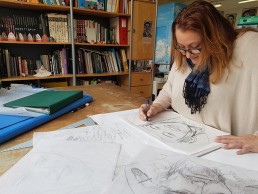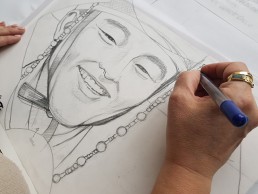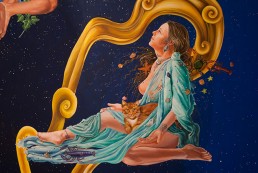If there is a subject on which all men agree, and perhaps it is the only subject on which they agree, it is that the cultures of all peoples, ancient and modern, were born through their myths. Mystics, scientists, men of faith and artists all agree that at the beginning of all civilizations there are imaginary stories that explain the nature of all things, human and divine. Besides, not all the citizens of the world would be able to say what the Newton’s law of relativity speaks of or what the “Copernican revolution” refers to, but each of them certainly knows at least one story about the initial creation of the world!
Even if a purely rational view supports that the idea of myth must be overcome, as one acquires “true” knowledge, the fact remains that all of us, in some way, are attracted to that world and its heroes, even today.

Myths of today
The mythical stories are from a time in which there were no means of mass communication, in which writing was a rare commodity and everything happened through the spoken story. Yet the strength of the myth has not diminished and has been renewed thanks to the ways of telling that the modern world, let’s remember that every age is modern for the contemporaries, has gradually manifested.
It does not matter what we believe in whether it’s the myths of the foundation of the world, of the birth of the Gods, of their friendship (or not) with human beings, we drank them in together along with the milk of our mothers. And we look for them and even produce new ones. What about fake news, which is magnified day by day on the internet, are they not little myths? What about the conquest of the moon by America? Many people even today do not know whether to believe it or not, and this is exactly the principle of a myth.

Falco and his stories
In Damanhur, Falco Tarassaco loved the language of myth, often referring in his teachings to the myths of ancient Egypt and even creating new ones, setting them in space or on Earth, in times between the past and the future.
The Damanhurians have dedicated many books, theatre performances, paintings and sculptures to represent these stories. From the character of Anansal to that of Amscusat, from the primeval Divinity that enters the world of the form to the “spiral families” from a distant point of the universe. The culture of Damanhur often presents images that are imaginary but basically, who knows, they could also be real.

And what about us? Who are we?
In a mythical story, the characteristics of the heroes who meet there mainly serve to make us reflect on who we are and who we would like to be. How much do we actually look like the person we would like to be? What must we improve about ourselves, our character and our habits to become like this?
Our life, our way of designing our world, our participation in the life of the family, the group, the city, are things already the way we would like or do we still have a little ways to go?
In short: do we already resemble our myth, the hero we want to be, or not quite yet?
In this, re-reading of the myths, from ancient texts such as the Bible, the Mahabarata and so on to the foundations of the various peoples up to the epic poems, gives us many ideas to reflect on our life and to imagine its development. We do not have to transform ourselves into Gilgamesh or Arianna of Crete, but we need to express what is really inside us. To know the world of the myth and imagine, for a moment, to be part of it, can teach us so many things but in a fun way!







